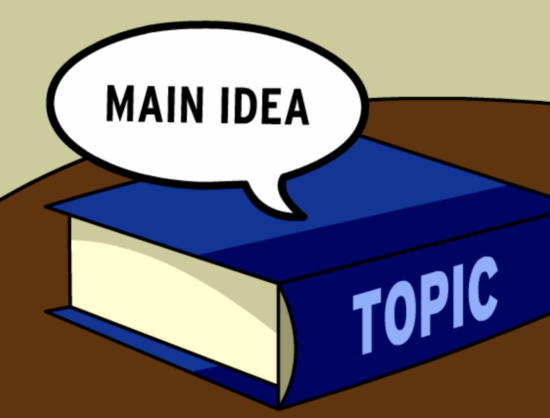“So what’s the main idea of this article?” asks just about every middle school and high school English teacher 29,435 times every school year. 93.4% of the time, the question is followed by responses that have nothing to do with anything you’ve read in the past decade.
Since my high standards require a success rate of more than 6.6%, I had to come up with a better way of teaching the main idea to my middle school and high school students.
I’m just going to give you the handout I now use to teach the lesson because that’s why you’re probably here: Teaching the Main Idea.pdf.
Using the Main Idea Lesson Plan Handout

Finding the Main Idea is a critical skill for building literacy.
So how can the same handout for teaching the main idea be used for high school and middle school? It’s because the handout can be used with any piece of literature. This also allows you to differentiate instruction by allowing different groups of students to read alternative reading selections.
- Choose the piece of literature. As students read, they jot down their first impressions in the chart provided on the aforementioned teaching the main idea pdf. As with all materials at ELALessonPlans.com, the handout is student friendly and teacher friendly.
- Now it’s time to do my favorite thing as an ELA Teacher: Teach students to cite textual evidence. For this particular version of citing textual evidence students will identify which words and phrases in the article or piece of literature helped them understand what the main idea is.
- Now it’s time for students to do their favorite (in the classroom) thing: Talk to a randomly or carefully curated by me partner about what they think is the main idea.
- Once the two young scholars agree, they record their findings in the second chart on the page. I really, really like charts. This chart requires citing textual evidence to support their answer. I love it when students cite textual evidence to support analysis.
- The final step requires students to write a 3-4 sentence (or more) answer to the following question: What is the main idea of “TITLE of ARTICLE.”
Guess What We Just Did?!?
Not only have you guided students into citing textual evidence to determine the main idea of a passage, you’ve taken them through the two most important ELA processes: The reading process and the writing process.
- You’ve, at the very least, established a purpose for reading before the class begins.
- Students skim the article.
- Students reread the article and take notes.
- Students discuss their findings and draw conclusions.
- Students use their answers as prewriting.
- Students write.
- As with any writing assignment, teachers urge students into proofreading and revising.
This happens all in one Finding the Main Idea lesson plan. This is why I contend that once students know how to cite textual evidence to support analysis, everything else becomes easier or no longer necessary to teach.
The teaching objective must seem pretty obvious, but I’ll write it down here anyway since your administrator might want you to write it down.
- I can determine the main idea.
- I can cite textual evidence to determine the main idea.
Last Updated on May 10, 2021 by Trenton Lorcher
